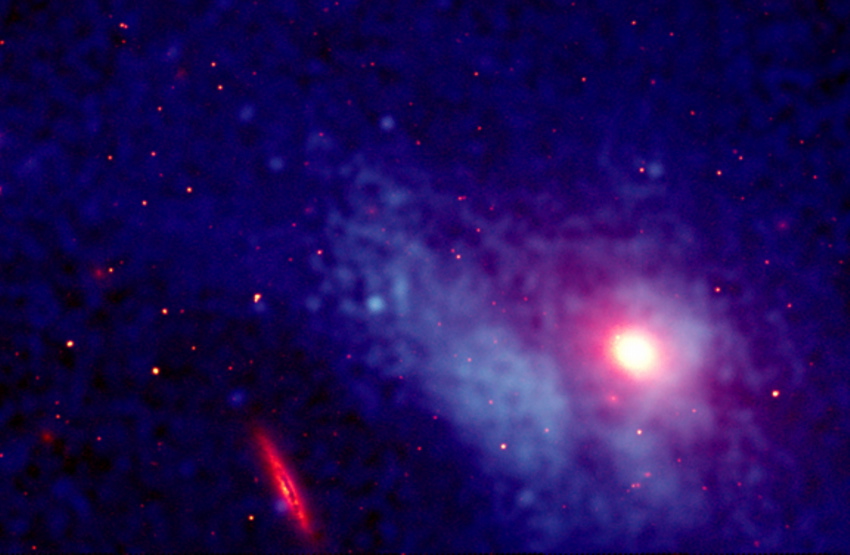
 Credit: X-ray: NASA/CXC/SAO/C. Jones, W. Forman & S. Murray; Optical: Pal. Obs. DSS
Credit: X-ray: NASA/CXC/SAO/C. Jones, W. Forman & S. Murray; Optical: Pal. Obs. DSS
Galaxy Trail
The nearest cluster of galaxies lies in the constellation of Virgo. By studying the Virgo cluster, astronomers are able to watch how the individual member galaxies move and interact. One interesting example is a galaxy called M86, which has been captured by the combined gravitational pull of the stars, gas and dark matter that make up the cluster. M86 is falling into the cluster on its far side and so is moving towards earth at a velocity of about a million miles per hour. As it falls it leaves behind a trail of hot gas as material from inside the galaxy is stripped from the galaxy. This trail is seen in the image above which shows a composite X-ray/optical picture of the galaxy. The blue glow stretching from lower right to upper left is X-ray emission from the stripped-out gas, which gets heated to temperatures of millions of degrees. The optical galaxy and a neighboring galaxy are shown in orange. Eventually M86 will merge with the Virgo cluster and lose all its gas and dust, effectively shutting down the formation of new stars in M86.
Last Week *
HEA Dictionary * Archive
* Search HEAPOW
* Education
Each week the HEASARC
brings you new, exciting and beautiful images from X-ray and Gamma ray
astronomy. Check back each week and be sure to check out the HEAPOW archive!
Page Author: Dr. Michael F. Corcoran
Last modified Tuesday, 27-Feb-2024 10:06:46 EST


